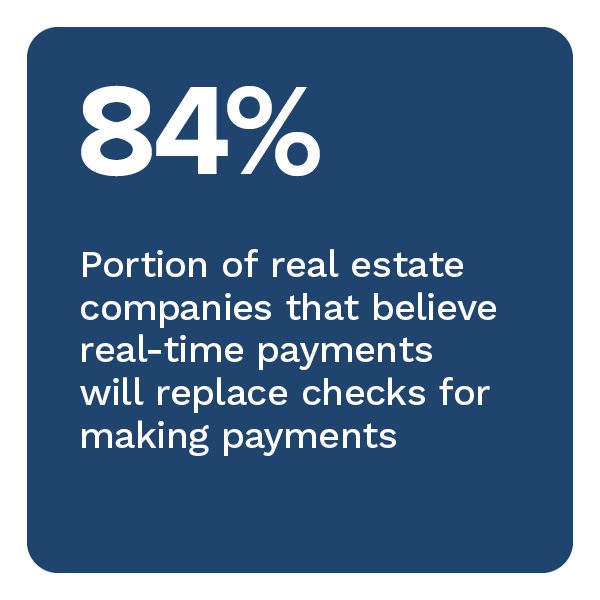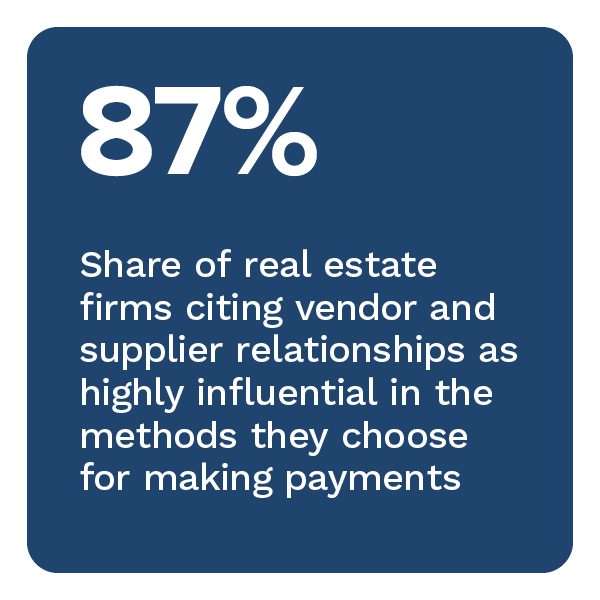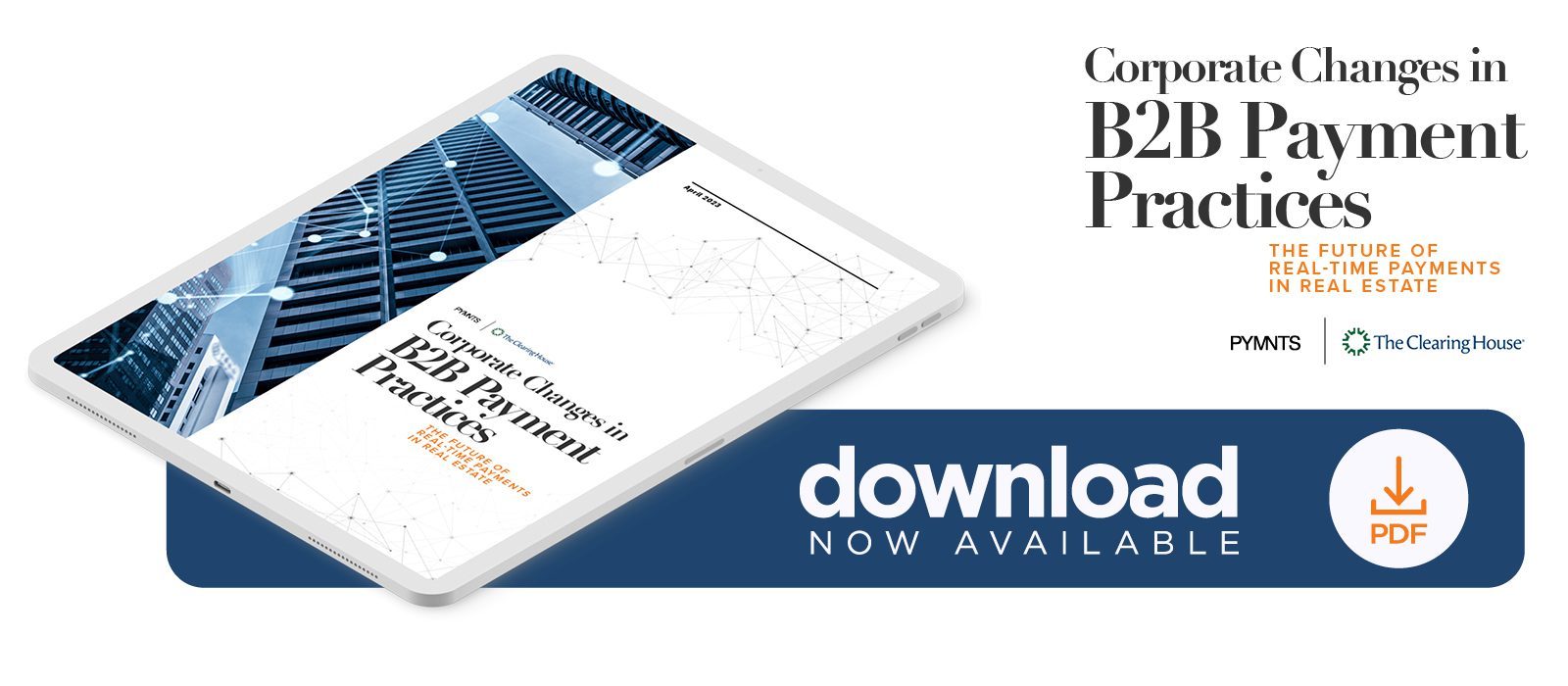Only 1% of Real Estate Firms Use Real-Time Payments – Why?
The real estate industry heavily relies on legacy payment methods for their business-to-business (B2B) transactions, but that is beginning to change.
PYMNTS’ latest research reveals that nearly 90% of real estate firms in the United States say their vendor and supplier partnerships are very or extremely influential in deciding which payment solutions to use when sending payments to other businesses — and firms receiving payments agree. Real estate firms realize that adopting modern payment solutions can help maintain and strengthen their relationships with vendors and suppliers, but most noted obstacles to adopting additional payment methods.
This is one of the key findings from “Corporate Changes in B2B Payment Practices: The Future of Real-Time Payments in Real Estate,” a PYMNTS and The Clearing House collaboration. In this report, 125 real estate executives with deep knowledge of the sector’s payments environment detail the payment methods they use, the underlying factors driving their preferences for these methods and their payment roadmaps for the next 12 months.
Key findings from the report include the following:
• More firms receiving payments than those sending payments are interested in moving from batch payments to real-time payments and processes, but obstacles remain.
While just 1% of real estate firms currently use real-time payments, 90% plan to adopt real-time payment solutions to receive payments and 77% plan to adopt these solutions for making payments in the next year. These firms face several impediments to implementation: 51% of businesses cited the cost of sending payments with real-time payments as a key hurdle to adoption, and 62% identified the difficulty of replacing or updating legacy IT systems.
• Checks are the payment method most likely to be replaced by real-time payments.
Although checks are one of the top payment methods currently used by real estate firms, 84% of these firms believe real-time payments will replace checks for sending payments, and 77% say the same for receiving payments. That does not mean other payment methods are safe: 65% of respondents think real-time payments are positioned to replace standard automated clearing house (ACH) and debit cards as a method of making payments. In addition, 23% believe real-time payments will replace credit cards and 29% believe they will replace cash for making payments.
 • Most real estate firms will switch from debit card payments to ACH, and a sizable share will increase their use of virtual cards to send and receive payments.
• Most real estate firms will switch from debit card payments to ACH, and a sizable share will increase their use of virtual cards to send and receive payments.
While there is a strong push for real-time payments, that is only one part of how the real estate payments landscape is changing. Sixty-eight percent of these firms plan to replace less frequently used payment methods, such as debit cards, with same-day ACH for sending payments. We also find that 30% will increase their use of same-day ACH for sending payments, and 21% will do so to receive payments. Similar shares aim to increase their usage of standard ACH to send and receive payments. One-third of businesses will tap virtual cards to replace less frequently used methods for sending payments.
To learn more about changes in the B2B payments landscape in real estate, download the report.


